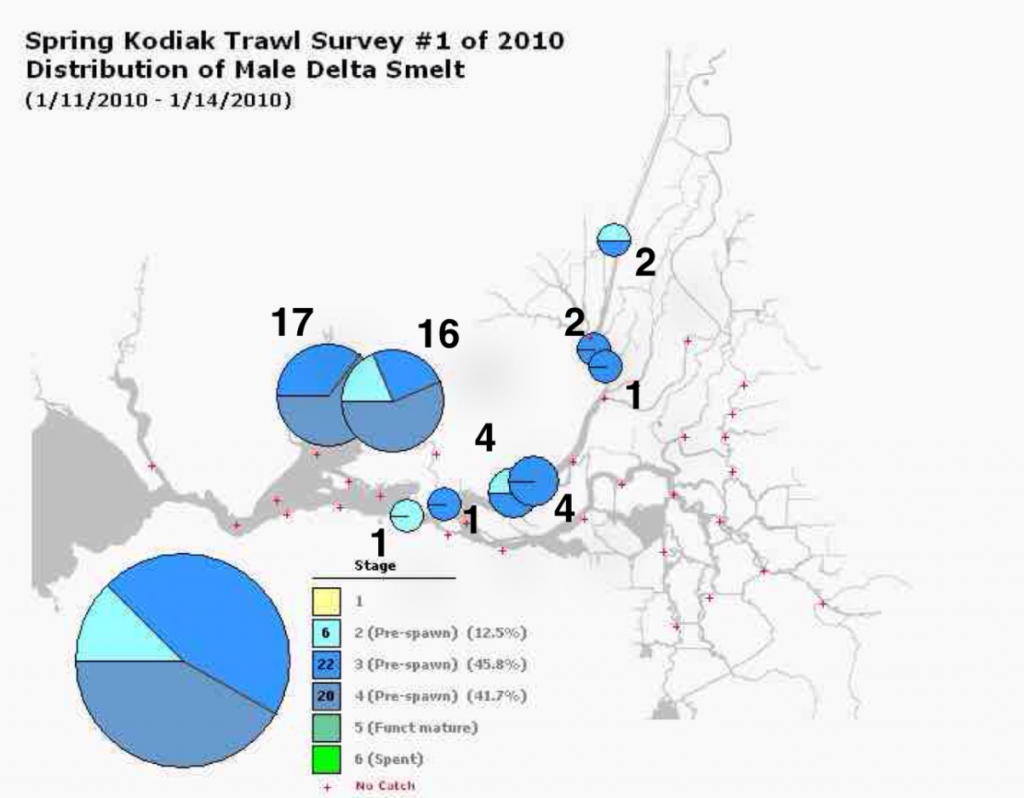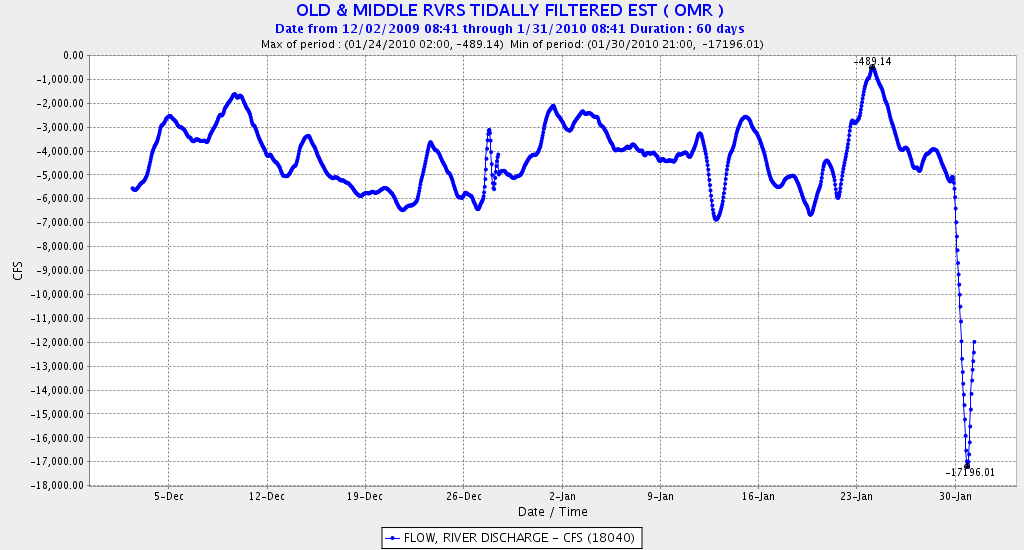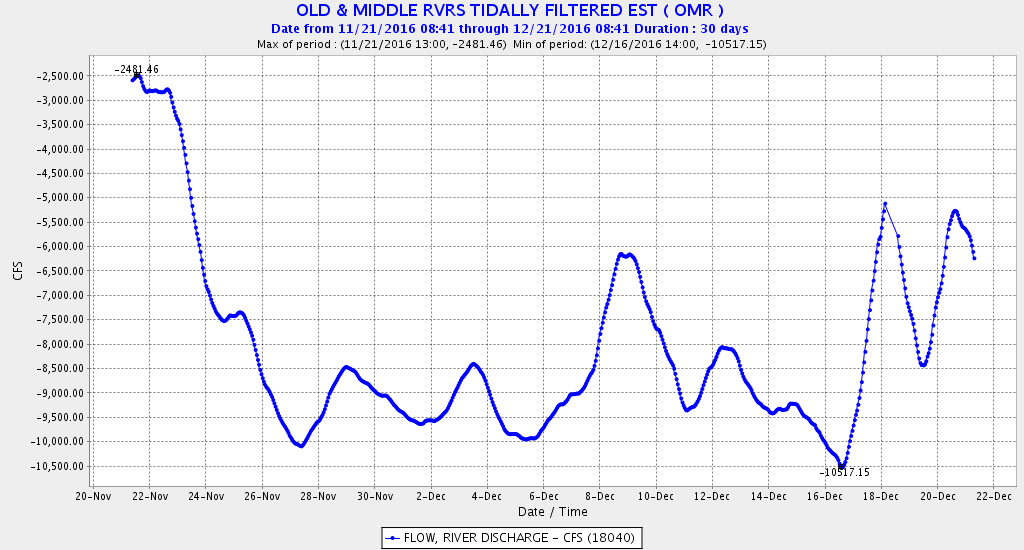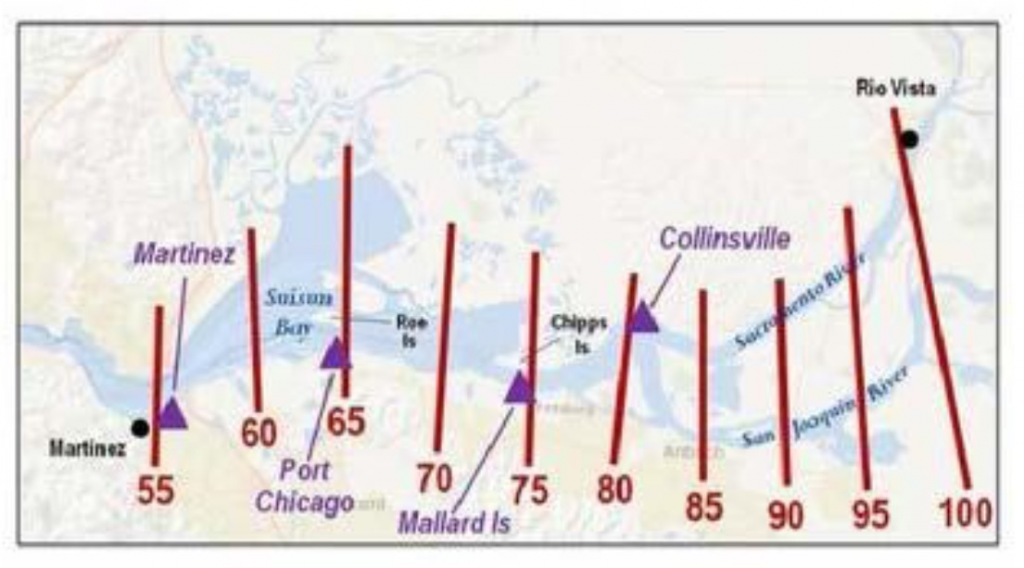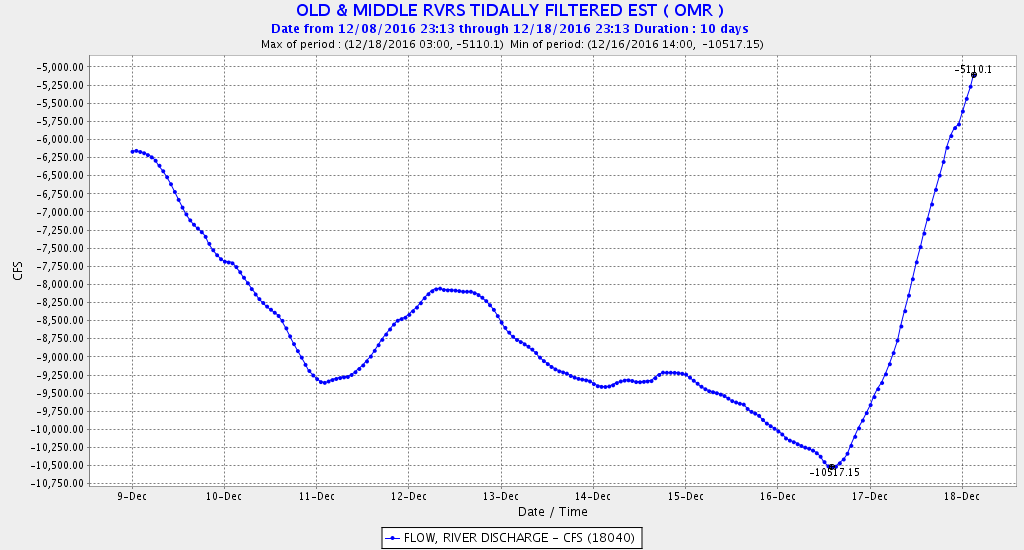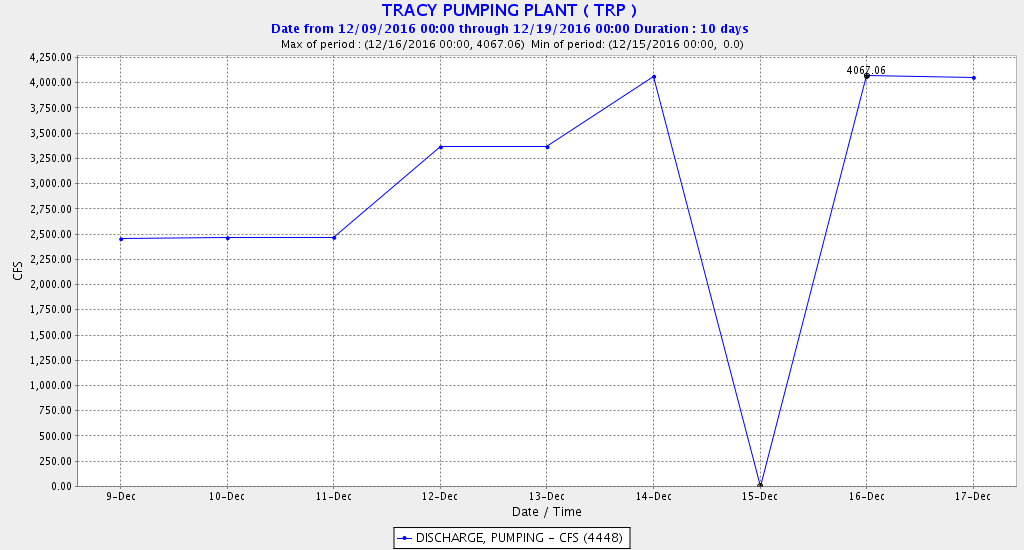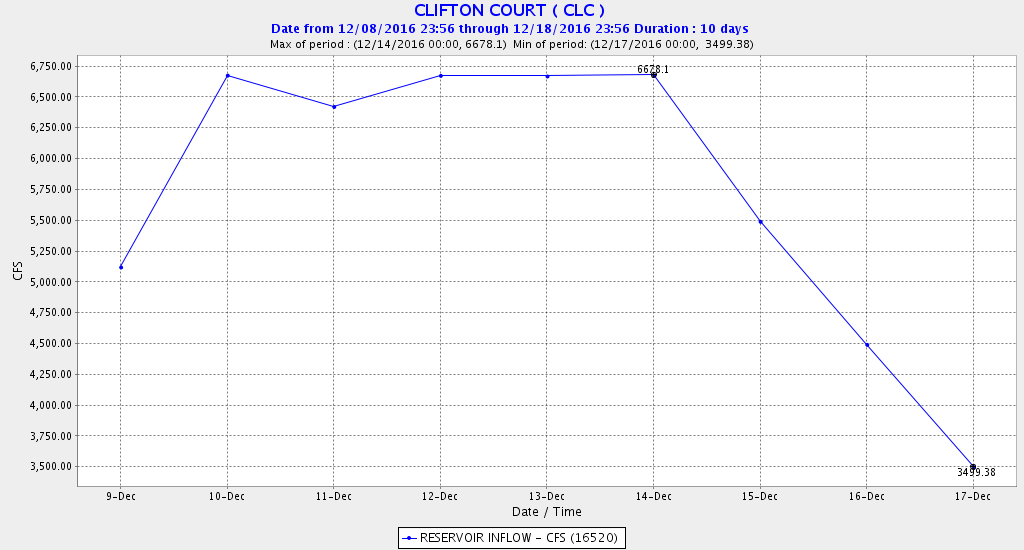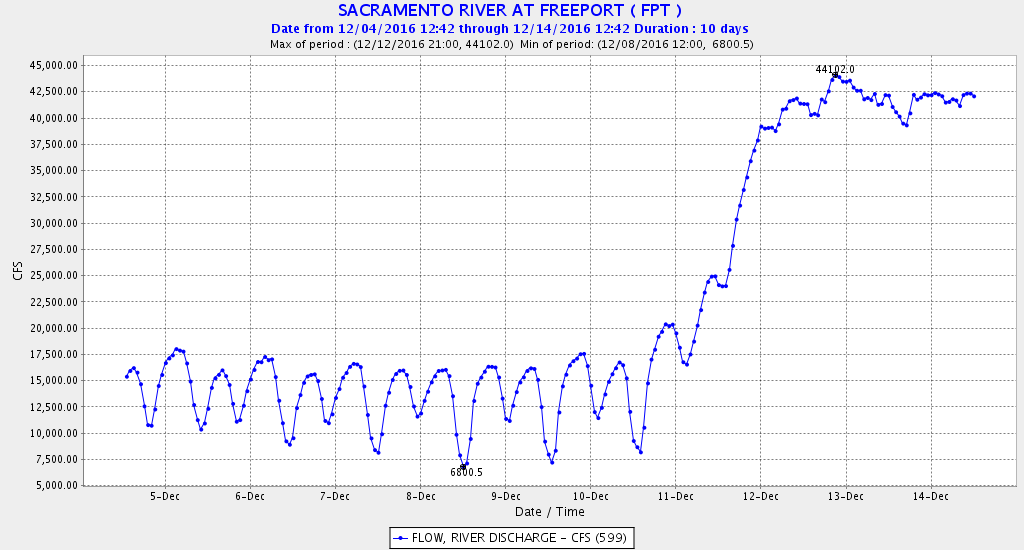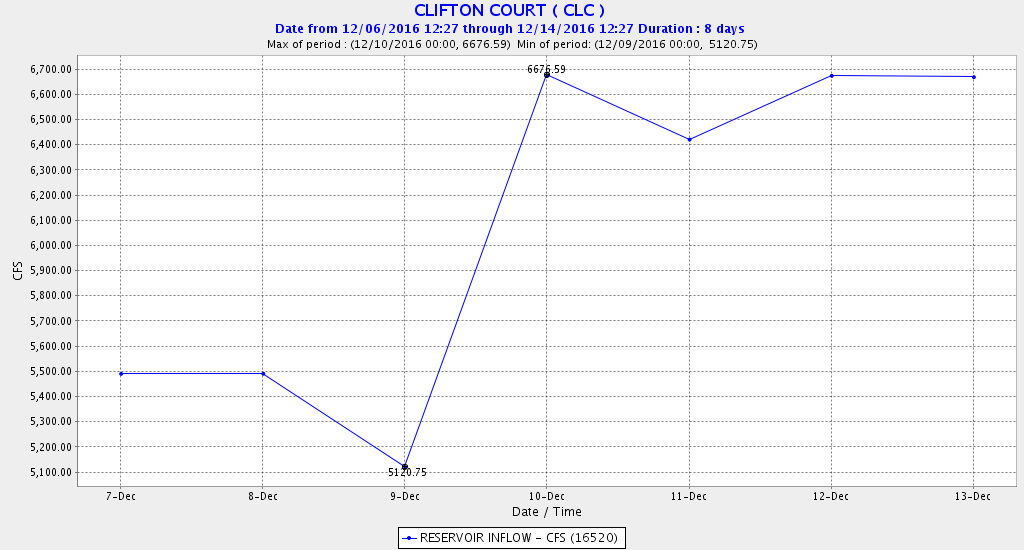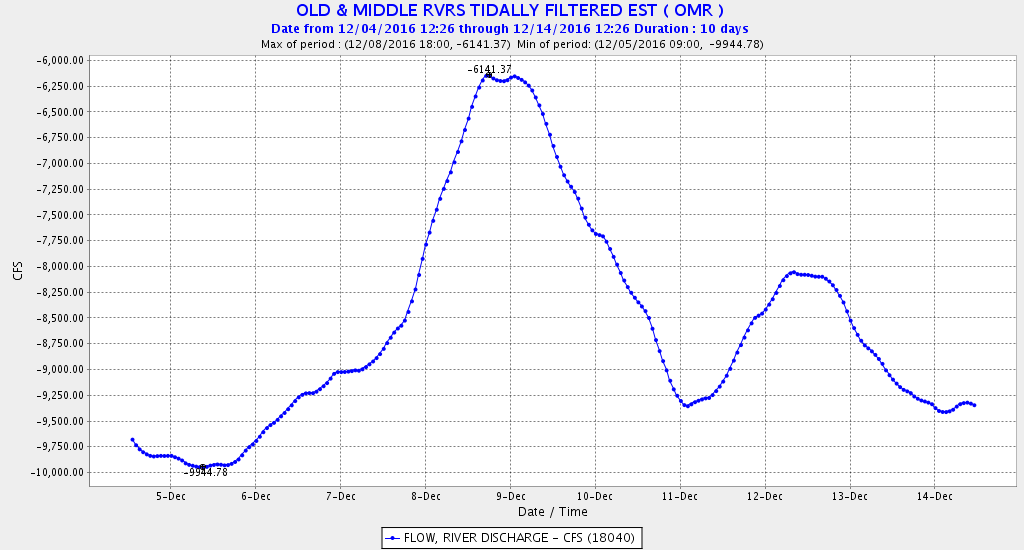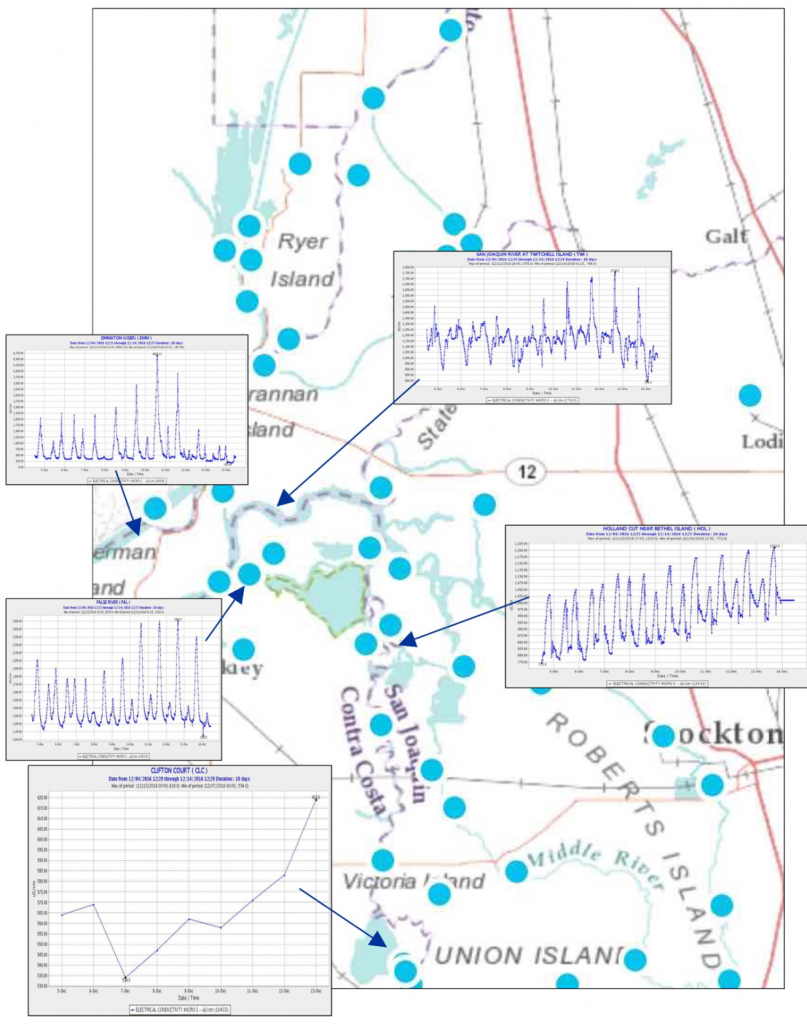December and January have traditionally been the months when salmon and smelt enter the Delta in large numbers with late fall and early winter storms. Juvenile and yearling salmon pour out of the rivers into the Delta. Heavy rains wash fry, parr, and smolts from their river spawning grounds into the Delta. Sub-yearling winter-run, yearling late-fall, spring-run, and fall-run, and newly hatched spring and fall-run fry abound. Adult longfin and Delta smelt migrate up from the Bay, surfing the tides on their annual spawning runs.
These same storms whet the appetite for December exports from the south Delta. In the two decades from 1990 to 2010, December and January exports often reached 11,000 cfs and at times exceeded 12,000 cfs. High salvage events occurred for salmon and smelt, reflecting both the abundance of fish and the strong pull of reverse flows toward the south Delta pumps. Precipitous population declines followed, forcing severe winter export limitations (only 1500-5000 cfs) imposed since 2008-2009 by ESA biological opinions to reduce fish losses. Winter salvage at the south Delta export facilities dropped sharply as a result of the limitations, but salmon and smelt populations had already reached record lows, and most remained so or got even worse during the 2012-2015 drought.
This year’s fall storms and high December Delta inflows has brought a new regulatory reality to Delta exports. The federal and state governments, under new mandates in the recently-passed federal water legislation, have kept exports high (9000-11,000 cfs) or moderate (5000-7000 cfs) through December, hoping fish would still be protected but allowing water supply deliveries to increase after four years of drought. South Delta salvage has remained relatively low so far, but there are signs of that potentially changing.
Smelt surveys indicate a small potential resurgence of the Delta smelt population and the presence of pre-spawning adult Delta smelt in the west and central Delta. The Smelt Working Group (SWG), state and federal biologists charged with advising water project managers, have recommended cutting exports to protect the smelt. Their concern stems not only from the risk of salvage at the pumps, but also from the fact that high exports may draw the smelt spawners into the central Delta where their offspring will be more susceptible to entrainment at the export pumps.
All the SWG risk factors appear to be in play in mid-December 2016 (Figure 1). Adult smelt have been captured in net surveys in the central Delta (yellow highlight). The turbidity front (>10 ntu) is approaching the south Delta. Old-and-Middle-River reverse flows (OMR) and exports are about -7000 cfs. Delta inflow and outflow are relatively high.
We will all be watching in the coming weeks to see whether what was billed as a “compromise” in the just-passed federal water legislation is protective of salmon and smelt.. If not, we will also be watching to see whether we are in the midst of an important adaptive management experiment that will adjust exports to protect fish, or whether federal managers will instead expect us to adapt our expectations and watch more fish die.

Figure 1. Mid-December 2016 Risk factors assessed by the Smelt Working Group in advising federal and state water project managers. Under these conditions, adult Delta smelt are apt to enter the central Delta as they have so far in mid-December 2016 (smelt distribution shown as yellow highlight). Direct risk to adult smelt will increase when the turbidity front reaches the export pumps.


